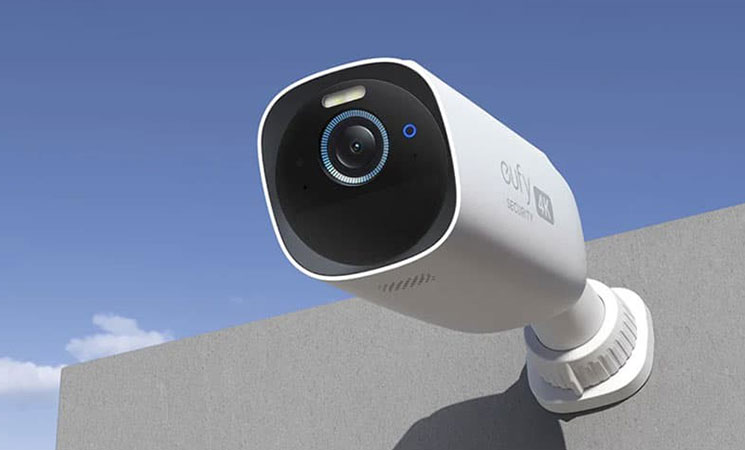In today’s world, ensuring the safety of your home and family is more important than ever. Outdoor security cameras provide a reliable way to monitor your property and deter potential intruders. This article will guide you through the best practices for using outdoor security cameras. You’ll discover why these devices are essential, what features to look for, and where to place them for optimal coverage.
Why Should You Get an Outdoor Security Camera
Outdoor security cameras are a crucial component of any comprehensive home security system. These devices provide a visible deterrent to would-be intruders, significantly reducing the likelihood of a break-in. When potential criminals see a camera, they often think twice before attempting any illegal activities. This added layer of security helps protect your property and loved ones.
Moreover, home security cameras outdoor offers peace of mind. With real-time monitoring and alerts, you can keep an eye on your home no matter where you are. Whether you’re at work, on vacation, or simply away for a few hours, you can check in on your property and ensure everything is as it should be. Many modern cameras come with features like motion detection and night vision, ensuring comprehensive coverage at all times.
Additionally, these cameras can be a valuable tool in the event of an incident. If a crime does occur, having clear footage can aid law enforcement in identifying and apprehending the suspect. This evidence can also be crucial for insurance claims, providing proof of damage or theft. By investing in an outdoor security camera, you are taking a proactive step towards safeguarding your home and family.
Features to Look for in an Outdoor Security Camera
When choosing an outdoor security camera, it’s essential to consider several key features to ensure you get the most effective and reliable device.
- Video Quality: Look for cameras that offer high-definition resolution. This ensures you can capture clear and detailed footage, which is crucial for identifying individuals and details in the event of an incident.
- Night Vision: Since many security breaches occur under the cover of darkness, having a camera that can record clear footage at night is vital. Infrared or color night vision technology can provide excellent visibility in low-light conditions. This capability ensures your camera remains effective 24/7.
- Weather Resistance: Outdoor cameras are exposed to the elements, so they need to withstand various weather conditions, from rain and snow to extreme heat. Look for cameras with a high IP (Ingress Protection) rating, which indicates their durability against dust and water.
- Motion Detection: These devices can alert you when movement is detected, allowing you to respond promptly. Some advanced models can differentiate between people, animals, and other objects, reducing false alarms. Additionally, cameras with two-way audio can be beneficial. This feature allows you to communicate with anyone on your property, whether it’s a delivery person or an unexpected visitor.
- Ease of Installation and Connectivity: Some cameras offer wireless setups, which are generally easier to install and more flexible in terms of placement. Ensure the camera is compatible with your home network and any existing security systems you have.
Where to Place the Outdoor Security Camera
Proper placement of your outdoor security cameras is essential to maximize their effectiveness. The first step is to identify high-risk areas around your property. These typically include entry points such as front doors, back doors, and ground-floor windows. Positioning cameras to cover these areas ensures that any potential intruder will be caught on camera.
Another crucial location is your driveway. Many thefts involve vehicles, whether it’s stealing the car itself or items inside it. A camera focused on your driveway can deter these crimes and provide valuable footage if an incident occurs. Additionally, consider placing cameras in areas that might offer easy access to your property, such as gates, side entrances, or alleys.
Height and angle are also important considerations. Mount your cameras high enough to prevent tampering but low enough to capture clear footage. Ensure the camera angle covers the widest possible area without obstructions like trees or buildings. This positioning helps avoid blind spots and ensures comprehensive coverage.
Lighting conditions play a role in camera placement as well. Avoid pointing cameras directly at light sources, which can cause glare and reduce image quality. Instead, position cameras to take advantage of natural lighting and any outdoor lighting you have installed. This setup ensures clearer footage and better overall performance.
Finally, consider privacy and legal aspects. Ensure your cameras do not infringe on your neighbors’ privacy or violate any local laws. Position your cameras to focus on your property and avoid capturing areas beyond your boundary lines. By carefully selecting and positioning your outdoor security cameras, you can create a robust security system that effectively monitors and protects your home.
Conclusion
In conclusion, outdoor security cameras are an invaluable tool in protecting your home and family. By understanding why they are essential, identifying key features to look for, and strategically placing them around your property, you can maximize their effectiveness. With these best practices, you can enhance your security, deter potential intruders, and gain peace of mind. Investing in quality outdoor security cameras is a proactive step towards ensuring the safety of your home and loved ones.













